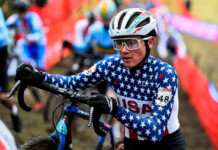By Dan Fazzini Jr.
In the 2014 Utah State Legislative Session, several bicycling related bills were considered. The following are summaries of the political process around each bill.
2-Abreast Changes (Rep. Ipson – Washington Co.)
At the urging of some Emigration and Cottonwood Canyon residents Rep. Don Ipson was working on legislation to modify the 2-abreast language in state statute which currently reads at UCA §41-6a-1105(3):
“a person riding two abreast with another person may not impede the normal and reasonable movement of traffic and shall ride within a single lane.”
Various drafts to modify the language by Ipson and residents were made which created some possible conflicts with other parts of that section, other statutes and likely other un-intended consequences in enforcement. Additionally there was not enough data and facts gathered to know if the changes would enhance public safety and enjoyment of the canyons.
It was apparent that after a few stakeholder meetings with cyclists, law enforcement, and council which had at times spirited discussions amongst and between the various parties, a full and equitable discussion was in order. Since this could not be accomplished during the short legislative session this year, the County Council and County Mayor’s office passed a resolution to create a study group to study this issue for Emigration Canyon being a “Crown Jewel” of our community and report back to the Council and Mayor by October 2014.
The Mayor’s office hopes that this will only be the beginning of renewed conversations between canyon residents and other users of the canyons and possibly spill out into other multi-use issues of our roadways and trails. The full resolution can be found here: goo.gl/MfdUAg
Although the working group will likely be in place by the time this is printed, the meetings should be open to the public for others to attend. For more information and to provide comments, please contact the SLCo Mayor’s office at 385-468-7054 or through the SLCBAC www.slco.org/bicycle .
HB388 “Quarter for Clean Air” (Rep. Johnny Anderson – Taylorsville/West Valley)
http://le.utah.gov/~2014/bills/static/HB0388.html
This bill would have allowed local counties to increase their Sales Tax by 0.25% to help fund/restore bus routes lost during the recent budget cuts and in the case of SLCo when rail service was added. The funds would have been restricted in SLCo so that UTA would not be able to add more miles to the rails system. The funds would have allowed them to add more cars or decrease the intervals on certain routes. The funds could have also been used for other public transit projects such as Bike Share programs.
Although passing out of the House with 58-10-7, it failed to get heard on the Senate floor on the final days of the session. The bill was rather straightforward in that the Bill did not actually impose any tax increase by its passage. Complicating factors in it not passing included the fact that UTA likely had the most to gain from the bill, its introduction late into the session to the Senate, and other un-foreseen political and logistical issues in the final week before the end of the session.
At the end of the day, the bill would have provided a two-step process for any sales tax increase to occur: 1.) the local government entity would have needed to pass an ordinance or resolution to put the measure on a ballot; 2.) the local government would then need to educate and sell their case to the public who would vote on it to increase their own taxes in the community affected.
It is unclear whether or not that this legislation will resurface next year. Reports are that the public was about 50/50 on whether they want this bill to pass. Rep. Anderson was also working on other bills addressing the changing landscape on how transportation funding is generated in general. Those efforts are likely to continue as motor vehicles are only getting more efficient, which reduces the collected gas tax, and more people are using alternative forms of transportation that the single occupant car.
For reference the average motor vehicle driver contributes about $350 per year from State and Federal fuel taxes and registration. This accounts to only about 1/3 of the total cost of designing, maintaining and building the highways. The rest comes from sales, Federal Income and property taxes along with the price paid for goods that includes the trucking portion of taxes and fees.
HB289 “Red Light Detection” (Rep. Johnny Anderson – Taylorsville/West Valley)
http://le.utah.gov/~2014/bills/static/HB0289.html
This bill removed the sunset on last year’s passage allowing motorcyclists and bicyclists to proceed after waiting 90 seconds at a light that does not detect them and it is clear to proceed. Although, technically you can still get cited for this practice, it provides what is called an “Affirmative Defense” which allows you to argue your case in front of a judge that you waited the 90 seconds and that you did not interfere with the right of way of other vehicles.
SB249 Eminent Domain Changes to include pathways (Sen. Curtis Bramble – Utah/Wasatch Co)
http://le.utah.gov/~2014/bills/static/SB0249.html
This bill would have made a narrow exception to allow a multi-use pathway to use Eminent Domain to obtain private in cases when the primary purpose is for public safety adjacent to a roadway and where logistics would have required it to divert to the immediate area next to the highway outside of its normal right of way. Eminent Domain is accomplished by purchasing the land and improvements at a fair value as allowed by the 5th Amendment of our Constitution.
The genesis to this bill was a trail along the highway in Ogden Canyon where the trail would need to be on the opposite side of the river due to geographical concerns. After passing the Senate, it did not get a chance for a vote in the House.
Legislative history on the need for such bills dates back to the 2006 session (SB117). Nearly every year a version appears for trail projects which provide both recreational and transportation uses. SB117 was introduced and passed the Senate, had public hearings in both houses, but only on the provision clarifying the notice requirements needed to the landowner. Only after it hit the House floor, an amendment was introduced by the House Sponsor Rep. Ure to add in the language to not allow Eminent Domain for recreational uses which are not a roadway for motor vehicle usage. This late amendment ignored the fact that many of these trails are used for active transportation or for the greater good for public health and recreation (as then Rep. Becker pointed out on the floor). Many times the only practicable solution for a trails project is to cross a small sliver of land. Due to the way the amendment was introduced after committee hearings had occurred, there was no further opportunity for other opposing stakeholders to weigh in.
Summary
Overall this legislative session was a rather light one in regards to bicycle and active transportation related legislation. As this is an election year for all of our state representatives and half of our senators, only through your involvement by contacting and helping out your representatives will the cycling agenda be carried forward. Rewarding those lawmakers who support active transportation will help ensure the continued momentum we are starting to see.






